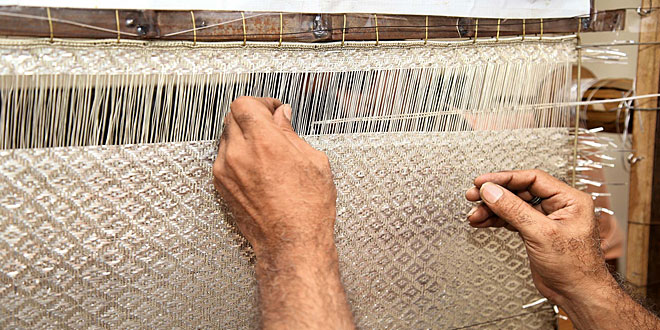Question: What was known as a qasba in medieval India?
Answer: During the Sultanate Period (13th to 16th Centuries CE), many of the villages, especially the district headquarters, slowly grew into towns, known as qasba.
Question: Name a city that was both an administrative and a trade center during the Mughal Period.
Answer: Surat, a port city in Gujarat, was a major trading center in the Mughal Period, from where merchants traded with Africa and Arabia. Surat zari was in demand all over the world.
Question: Name one important religious town or city from the south, east, west and north of India.
Answer:
- South – Thanjavur
- East – Konark
- West – Dwarka
- North – Varanasi
Question: Name four crafts in which the people of Medieval India were involved.
Answer: Spinning, gem-cutting, weaving and printing of fine textiles, metallurgy and high-quality pottery.
Question: Write a short note on Palampore cloth.
Answer: Palampore were the variety of painted fabrics, which were popular in the Mughal and Deccan courts. The borders of these pieces were block printed while the center depicted the ‘tree of life’ motif made by hand.
Question: What is Kalamkari work? Why is it called so?
Answer: Kalamkari cloth got its name from the Kalam, the pen-like tool used to draw designs on the cloth. The word Kalam means pen and Kari means work. It refers to a method of painting with natural and vegetable dyes on to cotton and silk fabric with a bamboo pen. Kalamkari cloth was much sought after by the Mughals and the Europeans.
Question: Establish with examples the greatness of crafts during the medieval period in India.
Answer: The accounts of foreign travellers contain descriptions of the wide variety of exquisite goods sod in the markets of those days. India was famous for its textiles, which formed one of the chief items of export.
- Patola, which is a kind of silk coloured with natural dyes, was popular in South-East Asia. It was very much in demand among the wealthy classes in Malaysia, Indonesia and the Philippines.
- In the east, Bengal was famous for its wide variety of textiles. Ibn Batuta saw many cotton trade centres during his stay in Bengal. Silk were also manufactured there. Dhaka Muslin was renowned for its fineness. Kasimbazzar in Bengal was an important trade centre for cotton and silk goods.
- Other important textile producing centres in the south were Golkonda, Shaliat and Pulicat.
- Golkonda was famous for its kalamkari products. These were finely painted cotton fabrics with motifs from Hindu mythology. They were exported through the port city of Masulipatnam.
- Palampore, another variety of painted fabrics were popular in the Mughals and Deccan courts.
- Hardwood furniture decorated with inlay work was another popular product. It was mainly made in Sind, Gujarat and the Deccan. Mother-of-pearl inlay against a black lac background was a traditional design in Gujarat.
- The art of carpet weaving touched new heights during the Mughal era. The carpets depicted either animals in combat or flowers. The flowers were woven so carefully that they could be easily identified.
 Class Notes NCERT Solutions for CBSE Students
Class Notes NCERT Solutions for CBSE Students



I have a question – What does capital town means?
Good answer but I want answer of some other questions which I am not getting in my textbook
it is very good
What is the difference between pilgrimage towns and Temple towns?
Write a short note on these topic in points:
a) Vijayanagara Empire
b) Temple Towns
c) Ports centers
d) Administrative towns
e) Capital town